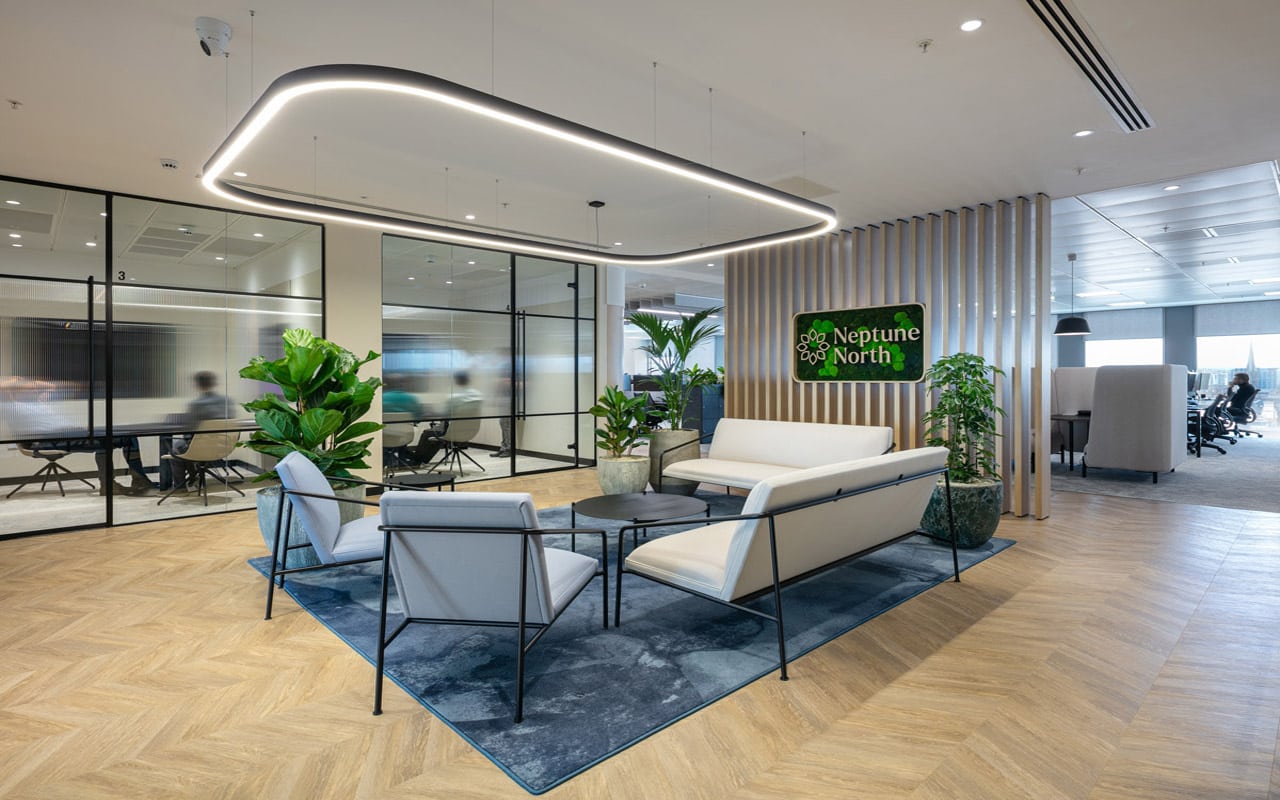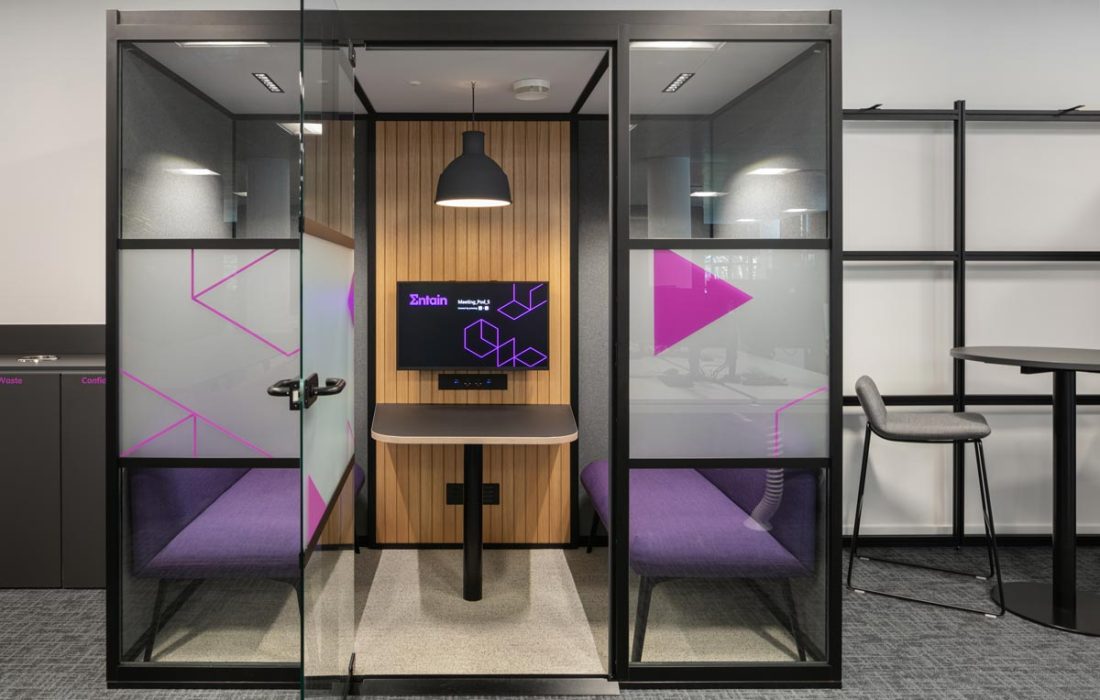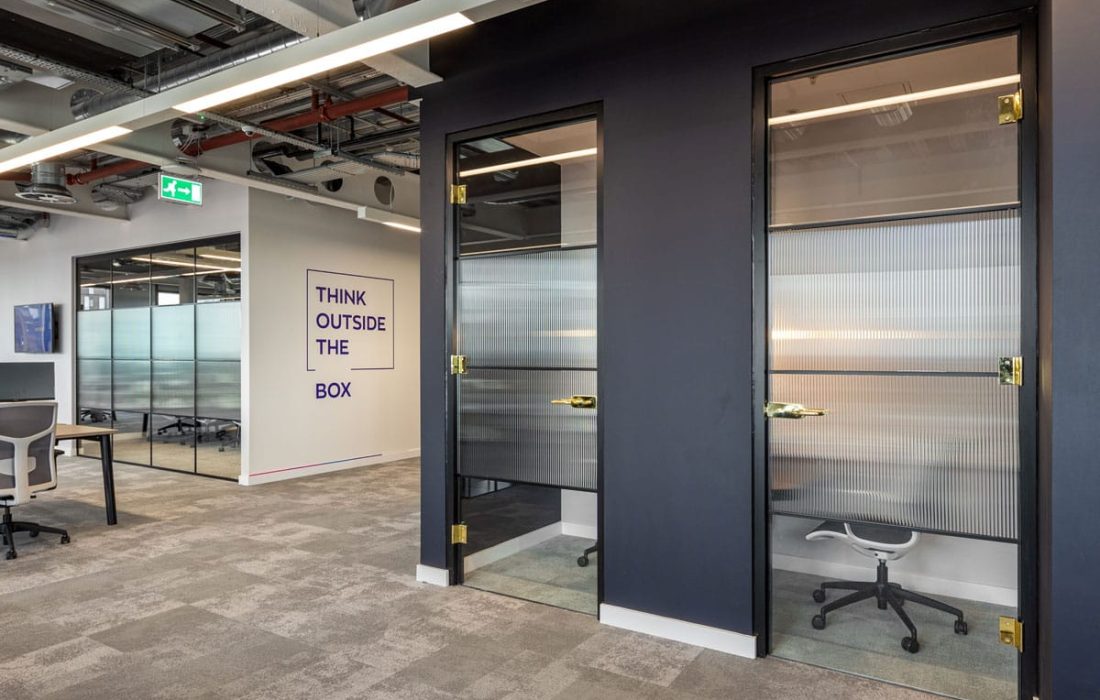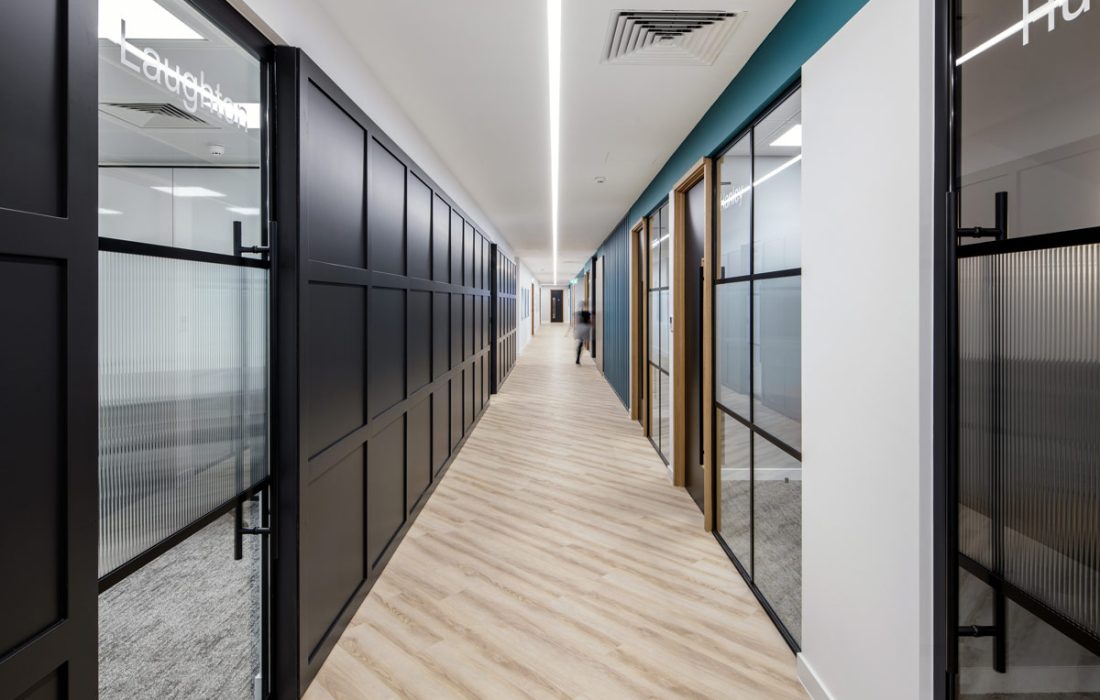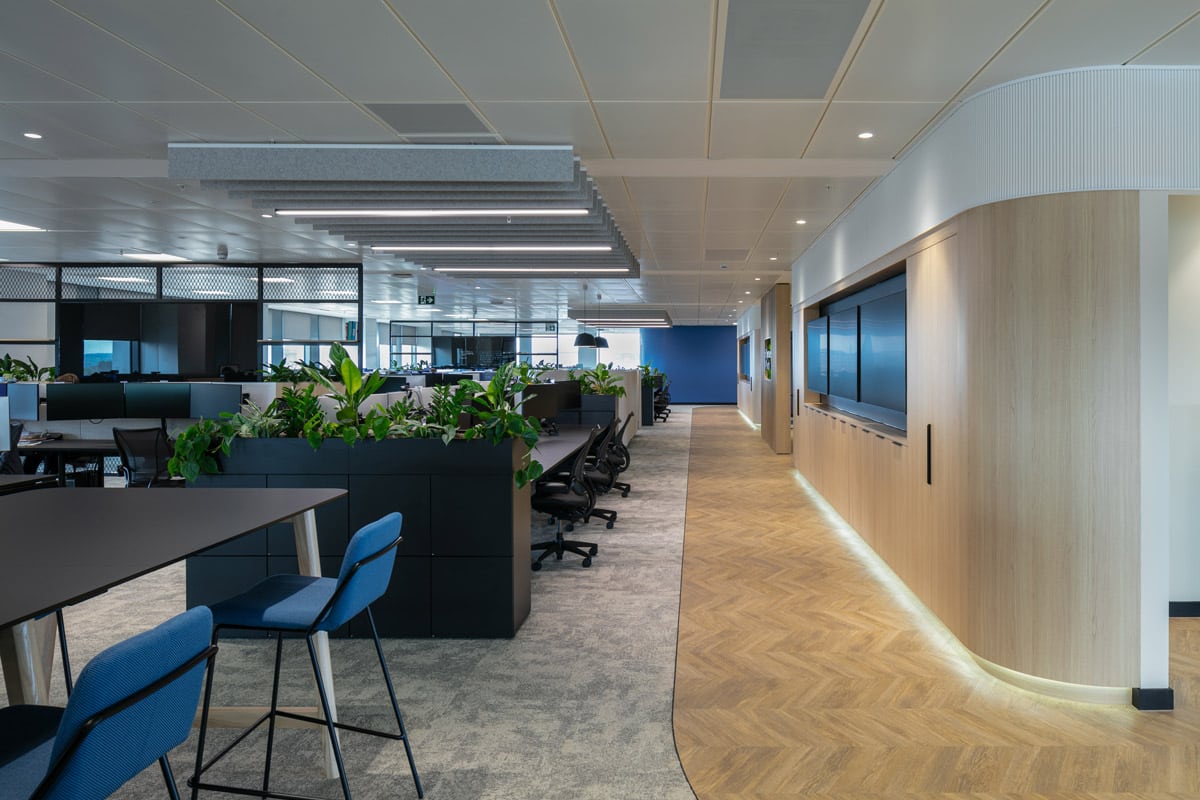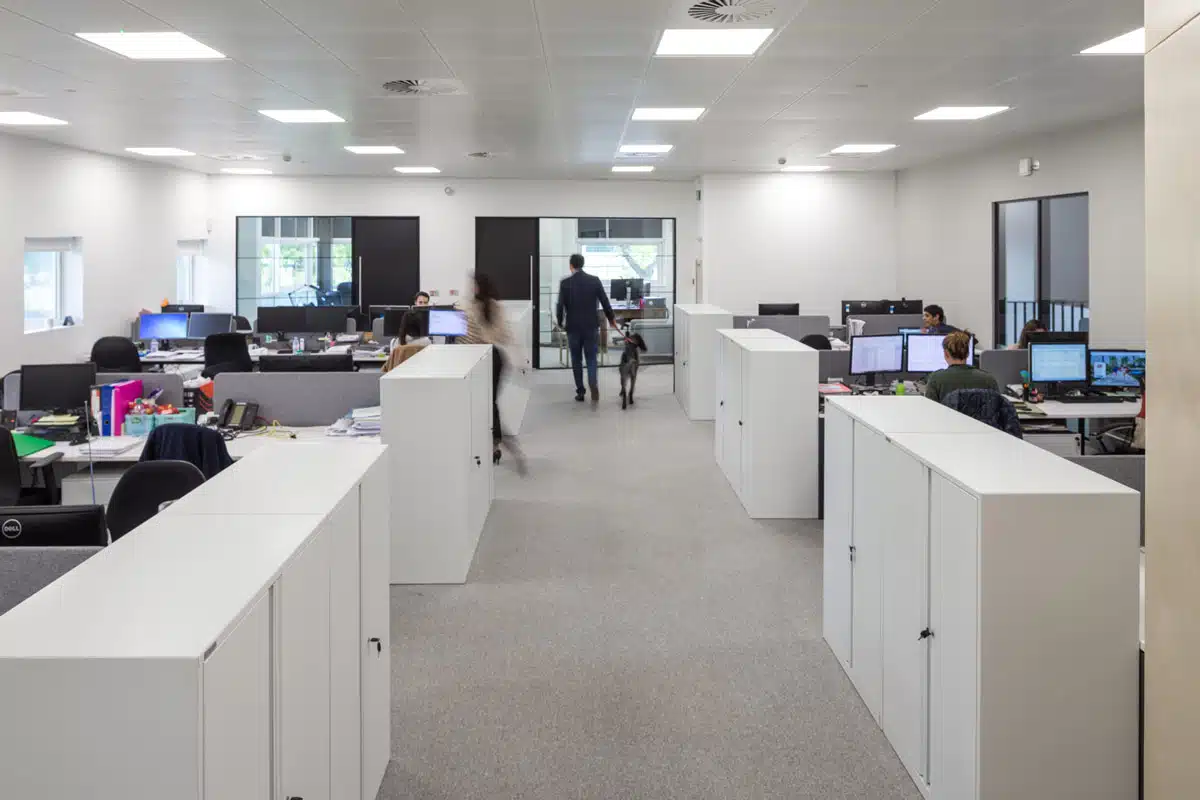In sectors like law, consultancy, and healthcare, maintaining client confidentiality is paramount. Yet modern office design trends often favour openness and collaboration. So how do businesses balance transparency with discretion?
At ADT Workplace, we understand the unique challenges involved in creating environments where sensitive conversations happen daily. Here’s how to design workplaces that protect confidentiality—while still fostering teamwork and efficiency.
Understand the Nature of Confidential Work
The first step in designing a suitable space is to fully grasp the nature of the work being carried out. Legal professionals may require private rooms for client meetings, while healthcare administrators need secure areas for personal data handling. Consultants often toggle between deep-focus tasks and collaborative sessions.
Because of these differing needs, the office layout must support multiple working modes—without sacrificing the privacy expected in regulated industries.
Start with Zoning and Space Planning
A well-zoned layout is key to balancing confidentiality and collaboration. For example:
- Quiet zones and private offices: Ideal for confidential conversations or calls
- Shared zones: Such as breakout spaces and team pods, support group work
- Buffer zones: Corridors or acoustic partitions can separate high-focus areas from noisy ones
By clearly defining each area’s purpose, you can reduce sound transfer and avoid accidental breaches of privacy.
Prioritise Acoustic Design
Sound leakage is one of the most common privacy concerns. Acoustic planning should be embedded in the fit-out process from the outset. Consider:
- Acoustic panelling: Wall and ceiling panels absorb sound in open-plan areas
- Carpet and soft furnishings: These help dampen footsteps and reduce echo
- Sound masking systems: White noise or ambient sound can make speech less intelligible at a distance
In sectors where discretion is vital, these solutions provide peace of mind for both clients and employees.
Incorporate Flexible Meeting Spaces
Fixed boardrooms are no longer enough. Flexible, tech-enabled meeting rooms allow confidential discussions in both small and large group formats. Glass walls can include switchable privacy film, while acoustic doors prevent sound escape.
For ultra-sensitive work, consider secure pods with controlled access and integrated tech that ensures discussions are not recorded or overheard.
Use Materials and Finishes to Support Privacy
Material choice plays a significant role in both the aesthetic and acoustic performance of a space. Think beyond visual impact:
- Solid-core doors and dense partitions: Limit noise transmission
- Upholstered walls or booths: Provide privacy in shared zones
- Frosted or smart glass: Allows light in while maintaining discretion
These subtle choices reinforce a culture of confidentiality while enhancing the workspace’s overall appeal.
Technology and Confidentiality
Modern offices rely heavily on technology—but it must be secure. From video conferencing to internal communications, consider:
- Secure Wi-Fi and VPNs to protect data transfer
- Booking systems for private rooms, helping avoid interruptions
- Access control systems that restrict entry to sensitive areas
Incorporating IT infrastructure that aligns with data privacy policies is especially crucial for healthcare and legal environments.
Foster a Culture of Discretion
Office design alone can’t ensure confidentiality. Your environment should support the behaviours and practices that promote discretion:
- Provide signage for quiet zones and private rooms
- Designate certain areas as “no-phone” zones
- Encourage use of meeting rooms for client-related discussions rather than open-plan spaces
By embedding confidentiality into the culture, the design becomes a natural extension of your values.
Future-Proofing for Flexibility
Finally, design for tomorrow as well as today. Hybrid working, client hotdesking, and regulatory shifts all require an adaptable space. Demountable partitions, mobile furniture, and modular meeting pods can evolve with your needs—without costly refurbishments.
Conclusion
Designing a workspace that champions confidentiality doesn’t mean compromising on collaboration or style. With careful planning, acoustic strategy, and thoughtful material selection, your office can support both discretion and dynamic working.
At ADT Workplace, we help clients in legal, consultancy, and healthcare sectors design fit-for-purpose offices that inspire trust and performance. If you’re planning a new workspace, speak to our experts today.

